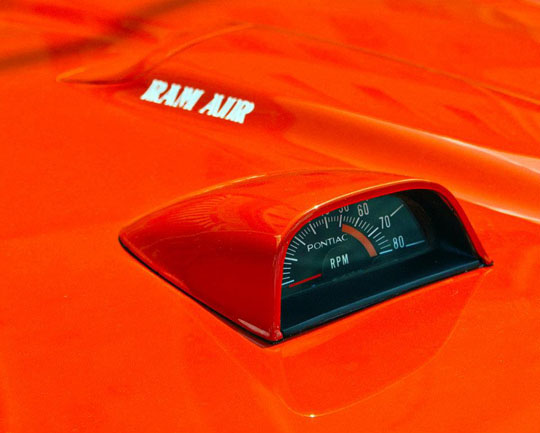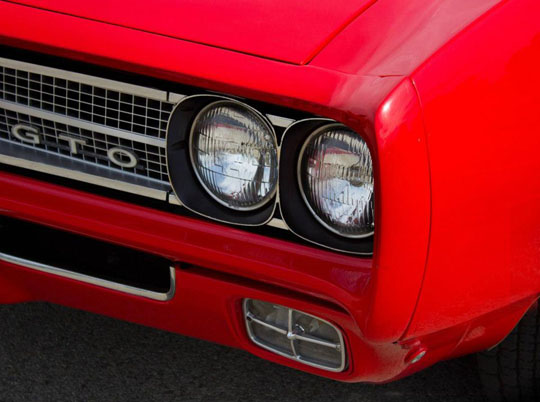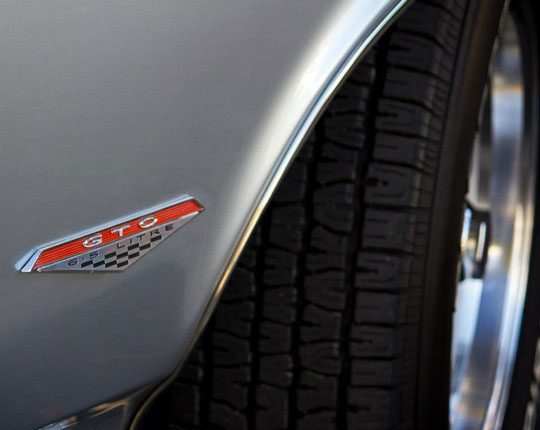Being a “Gear Head” my entire life, and growing up in the golden era of muscle cars, I decided to dedicate this week's photo essay to the Pontiac GTO. Surely anyone in my demographic would know of, or at least be aware of, this legendary piece of Detroit muscle. Perhaps this will spark a few memories in others of their own hot cars. I have owned many over the years, but I still loved that “Goat,” a 1967 400 four speed, with work done on the heads, an aftermarket Tri-Power set up (they were common options on 1964-1966 GTO's), headers and 3,90 gear, that in 1972 was clocking 13.20 quarter mile times at 107 mph “through the pipes.” Respectable for it's day. For the uninitiated, long time Chicago Sun Times Automotive Editor Dan Jedlicka sums it up best in his own words from his website, Road Tests and Classic Cars.
The legendary 1964 Pontiac GTO kicked off the wild 1960s muscle car market with a roar and made Detroit the world center for affordable high-performance cars. It can be argued that cars such as the light 1949 Oldsmobile with its new "Rocket V-8" or the 1955 Chrysler 300 Hemi V-8--first mass-produced 300-horsepower car--were the first American muscle cars. Those autos were among cars such as the 1956 Plymouth Fury and 1961 Chevrolet Impala Super Sport with its mighty 409-cubic-inch V-8 that generated considerable interest in high performance models. But the 1964 GTO is generally regarded as the first highly popular, widely available muscle car--the one that opened the door for a whole bunch of mid-1960s to early 1970s affordable American muscle cars. Nearly all domestic high-performance autos were called "super cars," or mainly "muscle cars," after the first GTO debuted. Actually, conservative General Motors only grudgingly let its Pontiac division make the GTO, which turned out to be one of GM's great success stories. GM had banned a Pontiac such as the GTO, partly because it feared such an auto would make it look bad to its conservative older customers and to the government, which had threatened to break up GM because of its market dominance. But several top maverick Pontiac executives secretly developed the GTO--and then presented GM management with strong GTO dealer orders.
"GM thus was forced to allow the GTO to be built," said Jim Wangers, Pontiac's marketing and advertising guru in the 1960s, who now is an analyst with California's Automotive Marketing Consultants. Wangers marketed the GTO with everything from a national hit record—appropriately titled "GTO"—to GTO "driving shoes" from Thom McAn and men's "GTO cologne." The record, performed by a group called Ronny and the Daytonas, still is played on oldies radio stations when running their list of top hit records of the 1960s. Pontiac really needed the GTO to keep its lucrative performance image alive. It had transformed itself from a mediocre "old man's" car division in the late 1950s to a hot one, partly through successful race activities and sexy street cars. However, GM suddenly banned racing in early 1963. And it also banned mid-size cars with big engines, such as the powerful Pontiac 389-cubic-inch V-8 that the GTO needed to be a successful hot car. Pontiac chief engineer John DeLorean and fellow engineers Bill Collins and Russ Gee had found that the 389 V-8 easily fit in the newly styled mid-size Pontiac Tempest and turned it into a sizzling high-performance car. Just for fun at first, they transformed the Tempest into the car that became the GTO.
I recently shot some photos of many a GTO on a Route 66 Tour that stopped at the Pontiac Oakland Car Museum in, yes, Pontiac, Illinois. My photographs of cars are less conventional than most, as I try to “focus” (no pun intended) on the shapes and lines of them, giving them yet their own wonderful identity. The photos are below, everyone, start your engines!
Further Reading: Wikipedia, Muscle Car Club and How Stuff Works.

























